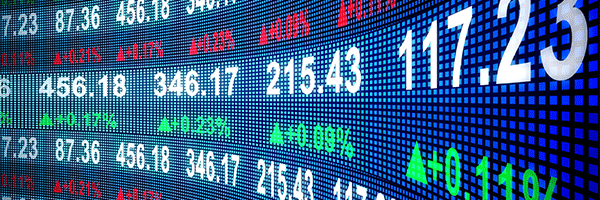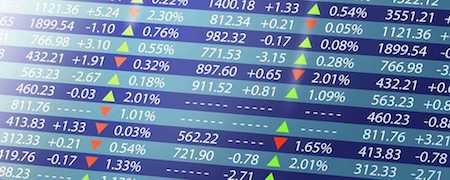
May 14, 2021 | Daily JAM, Volatility |
On May 11, when the Standard & Poor’s 500 was headed for a 2.14% loss on the day, I took a long hard look at selling the downside hedges I own in my Volatility Portfolio. In that portfolio I own a September 17 Put Option on the iShares Russell 2000 ETF (IWM) and two Call Options on the CBOE S&P 500 Volatility Index (VIX) for July 21 and August 18. I came very close to pulling the Sell trigger on one of the VIX calls. (Because the VIX goes up as fear in the market rises (usually on a sell off or worries about an impending sell off, the Call Option on the VIX acts as a Put Option. It will become more valuable as the market falls.) I was in the black on the August 18 Call Option with a strike price of 22 because the Vix had climbed 26.33% on the day to a close of 27.59. I think the decision not to sell was a non-decision. And a mistake. I dithered over it for so long that the market had closed by the time I decided to sell. A sell would have resulted in a profit of 9.2% from my March 23 buy. Not huge but still money. I decided not to sell the iShares Russell September 17 put with a strike price of $215. The ETF would close that day at $218.96 and then drop to a close of $211.75 on May 12. A Sell would have resulted in a gain of 15.6% atom my March 24 buy. Unlike the failure to sell the VIX Call, I don’t think the decision not to sell the IWM Put was a mistake even if it meant foregoing a 15% profit (on a holding period of less than 2 months.) Let me explain.

May 14, 2021 | Daily JAM, Volatility |
I’d like to think that the volatility of last week is all over and a thing of the past. But I don’t think it is. This is a transitional market with sentiment moving toward value, cyclical, and post-vaccine stocks and away from technology momentum plays. And it’s also a market trying to figure out how to reprice all assets in light of a potential move to lower stimulus bond-buying and to raise interest rates at some point in the future. These kinds of transitions don’t occur smoothly and I think we can expect more volatility.

April 10, 2021 | Daily JAM, Mid Term, You Might Have Missed |
The week ahead could well bring even less volatility and even more complacency as we move into what everyone expects to be a stellar earnings season–at least in comparison to the first quarter of 2020

March 22, 2021 | Daily JAM |
Here’s my second bunch of 10 stocks that I’ll be tracking as buy on the dip candidates in my Dip-O-Meter. I’ll be adding these names to the Dip-O-Meter itself and updating the first 10 names as soon as my tech people

March 18, 2021 | Daily JAM |
Weekly options, monthly options, quarterly options, and even futures contracts all expire tomorrow.

March 15, 2021 | Daily JAM, Jubak Picks, MRVL |
Today, March 15, shares of Marvell Technology Group (MRVL) closed at $48.08, slightly above my target price of $48 a share. In this very volatile market for technology stocks, I’m going to take my almost 20% profit (19.90% to be exact) and sell these shares out of my Jubak Picks Portfolio tomorrow, March 16. The profit came in less than two weeks from my March 6 buy.

March 10, 2021 | Daily JAM, Videos |
I’m starting up my videos on JubakAM.com again–this time using YouTube as a platform. The fourteenth YouTube video “3 Picks for Continued Volatility” went up today.

March 10, 2021 | Daily JAM |
In the last few days the yield on the 10-year Treasury note has tumbled from 1.6% on Monday, March 8, to 1.54% on Tuesday to 1.52% today. That’s brought a breather selling that had, by Monday, pushed the NASDAQ Composite index into a correction of around 11% from its February 12 high. Yesterday and today, the market is as relatively calm place. Cyclicals, vaccine recovery stocks, and “value” stocks are outpacing the technology sector and the BIG tech stocks like Apple (AAPL) and Amazon (AMZN) that had paced the move up to the February 12 high aren’t showing up on the leader board. But still–the Dow Jones Industrial Average may be outpacing the NASDAQ Composite today (up 1.57% to 0.31%) but both indexes are in the black. But don’t relax quite yet. I expect volatility will return.

November 3, 2020 | Daily JAM |
As of today, November 3 at 12:30 p.m., I don't know who will win the Presidential election. I don't know if the rally in the stock market today, with the Standard & Poor's 500 up 2.02% at 12:30 p.m. New York time, is a vote for some specific outcome, or (more...

October 16, 2020 | Daily JAM |
Readers of JubakAM.Com in comments to a number of my posts recently have been kicking around the question of whether the huge increase in passive investing strategies has changed volatility in the stock market. Passive investment strategies such as indexing now make...

September 29, 2020 | Daily JAM, KCAC, Mid Term, Special Reports, Volatility |
Yikes. Does this market have enough volatility for you? And I think that volatility will only get worse over the next two to six months, I can't remember a market with so much potential to move up or down in big relatively short-term volatility as this one. Just as...

September 25, 2020 | Daily JAM, Morning Briefing, Volatility, You Might Have Missed |
Today looks like a strong rally but I've got my doubts. At the close the Standard & Poor's 500 was up 1.60%. The Dow Jones Industrial Average was ahead 1.34%. The technology laden NASDAQ Composite was higher by 2.26%. The NASDAQ 100, dominated by the technology...













